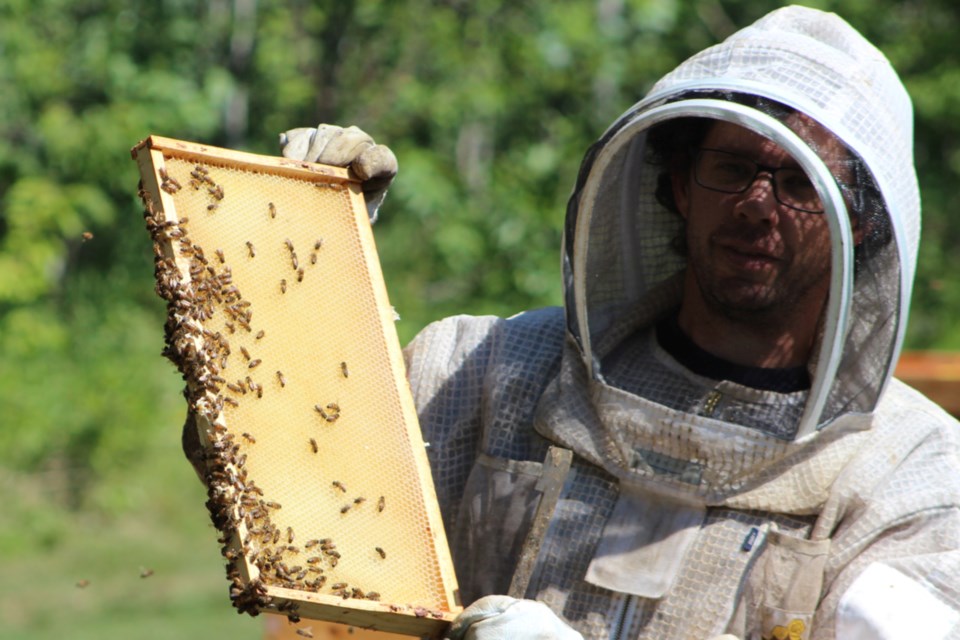ATHABASCA – When people think of bees, their minds are immediately drawn to images of flowers and sunshine and while those conditions are optimal for honeybees, weather like that is not always easy to find in Athabasca.
Both extreme heat and cold can hurt apiaries, but local beekeepers have protective measures in place for our extreme climate like Martin Meier of Martin’s Apiary who has taken many precautions with his apiary in order to keep the bees alive through the cold months.
“I overwinter my hives inside in a climatized shop, which stays at five degrees (Celsius) plus at all times,” he said.
If the hives are not kept in these climatized shops, it's possible to lose up to 80 per cent of the bees to starvation because they are unable to move to their honey stores.
“An outside beekeeper which overwinters outdoors, that's pretty tough sometimes, you know, on the beekeepers,” Martin said, as the hives can be well protected but the keeper is working in the elements.
Martin and his wife have been running their apiary since 2015 and have gone from a start of two hives to, now, 120 hives. To put this in perspective, this is between 30,000 and 35,000 bees.
When it comes to the heat, Martin’s bees require some extra care.
“(The heat) is pretty hard on the bees I would say, the beekeeper as well, because they are spending more time hauling water than nectar,” Martin said.
“What they do is they (create) air conditioning. They haul water into the hive, and then they store it in the combs, and it evaporates, which cools down the hive. When it's 37 degrees Celsius, yeah, they hold quite a bit of water instead of nectar.”
All this work comes with a huge payoff in the honey produced by these honeybees. Martin’s apiary produces many products with their honey and beeswax, ranging from flavoured honeys to beauty products.
“Our honey is pretty much from hive to jar; there's no heat added,” Martin said.
By adding heat to the honey, the benefits are often reduced due to the killing of many helpful bacteria so, because of this, Martin chooses to sell all his honey in its raw state.
Their honey is also packaged in glass jars as often as it can be for the sake of sustainability.
“We have enough plastics around the world, so we don't need to add more and more each year,” Martin said.
“We are doing natural beekeeping as much as we can,” Yvonne Meier, Martin’s wife, said. “So that means for our business, as much as we can, we use everything natural.”
Yvonne is also responsible for using the honey and beeswax to make skin care products.
“I thought well, we have beeswax, I can make lip balms,” Yvonne explained when discussing how the honey and beeswax can be used in many kinds of products.
While Martin and Yvonne have a very large apiary, there are some smaller beekeepers within the area too.
Sascha Smethurst and her family have recently adopted two hives and are in the process of learning all about the bees.
Because they don’t have a heated building to keep the bees in throughout the winter, the Smethurst's have thick, wooden boxes for the hives and will be taking other precautions to keep the bees alive and safe.
“It's going to be hard when spring comes because it gets all warm and then snows again. [The bees] are going to be (thinking), ‘Oh, time to go outside,’ when in reality, it’s not, there's nothing for food,” Smethurst said.
These many local beekeepers have learned to overcome the struggles of our climate and continue to foster these bees despite the hard work it takes, proving to be an inspiration for those looking to start their own hobbies despite the challenges that may arise.



